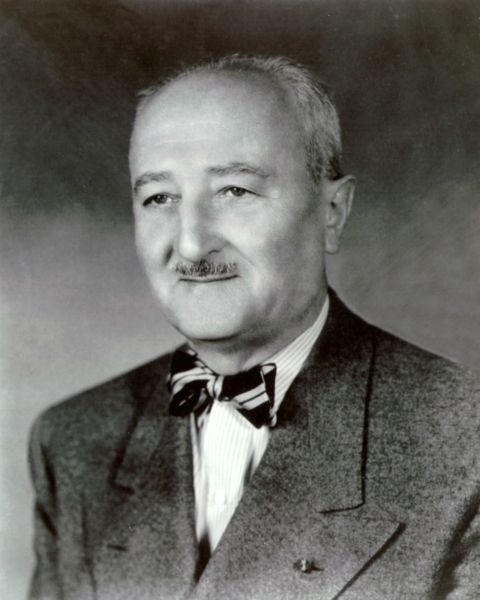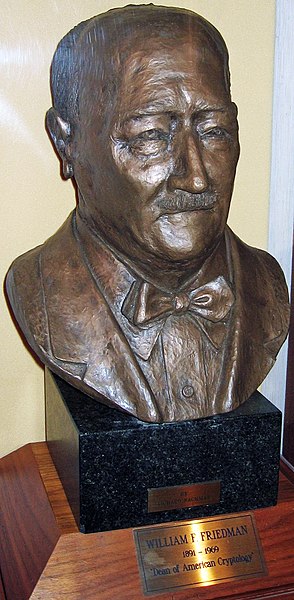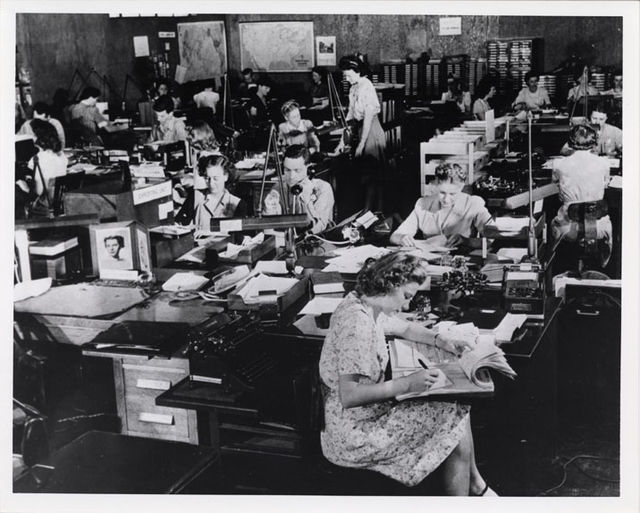William Frederick Friedman was a US Army cryptographer who ran the research division of the Army's Signal Intelligence Service (SIS) in the 1930s, and parts of its follow-on services into the 1950s. In 1940, subordinates of his led by Frank Rowlett broke Japan's PURPLE cipher, thus disclosing Japanese diplomatic secrets before America's entrance into World War II.
William F. Friedman
Riverbank Laboratories
SIGABA cipher machine
Bust of Friedman on display at the National Cryptologic Museum, where he is identified as the "Dean of American Cryptology".
Signal Intelligence Service
The Signal Intelligence Service (SIS) was the United States Army codebreaking division through World War II. It was founded in 1930 to compile codes for the Army. It was renamed the Signal Security Agency in 1943, and in September 1945, became the Army Security Agency. For most of the war it was headquartered at Arlington Hall, on Arlington Boulevard in Arlington, Virginia, across the Potomac River from Washington (D.C.). During World War II, it became known as the Army Security Agency, and its resources were reassigned to the newly established National Security Agency (NSA).
Ann Z. Caracristi (cryptanalyst)
U.S. Army Signals Intelligence Service personnel at Arlington Hall (c. 1943)
Image: William Friedman
Image: Abraham Sinkov







